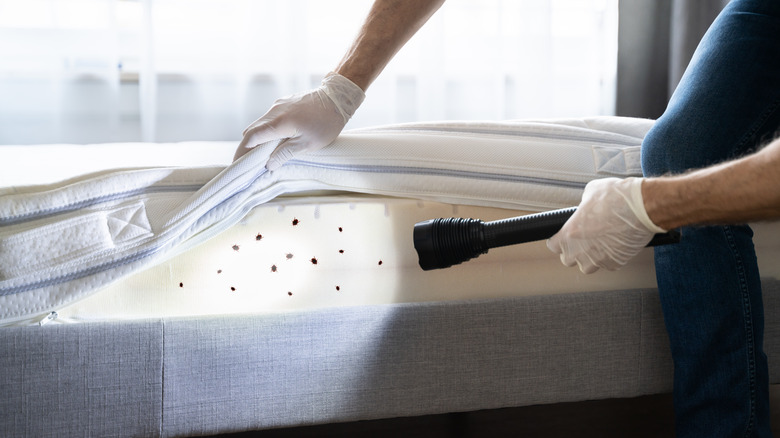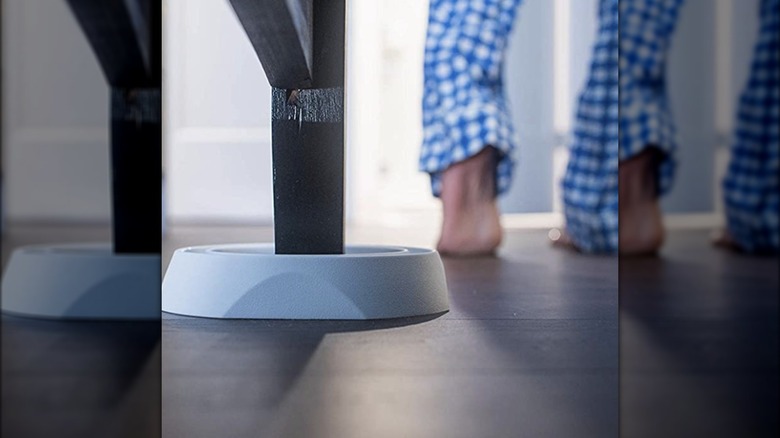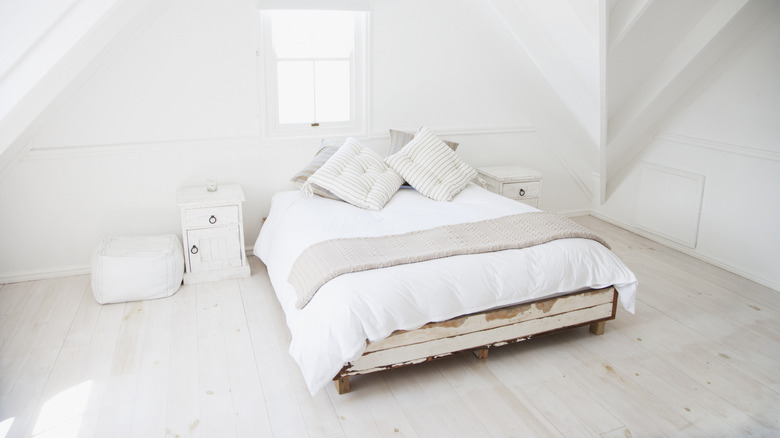Manage Bed Bug Infestations With Simple Cups
We may receive a commission on purchases made from links.
Correction 2/15/23: A previous version of this article stated that using water in beg bug interceptors was effective.
Just hearing about bed bugs is enough to give most people the heebie-jeebies. Like ticks, these little parasites thrive on the blood of both animals and humans. They're called bed bugs since they like to hide in the crevices and corners of mattresses, bed frames, and the like and come out to do their biting at night while folks are sleeping. Regrettably, they can also spread to furniture in other parts of your house, and if you live in a condo or apartment, they can jump next door. It also doesn't matter how clean your home is or how new. Bed bugs can be brought home in your luggage when you travel or acquire used furniture.
So, what do bed bugs look like? They're tiny, about the size of a small fruit seed. They are off-white, pale yellow, or chestnut brown until they feed and turn red. They're also very flat, and that's how they squeeze into small crevices for concealment. You may not even know you have them until you notice red, itchy welts on your skin when you wake up. The other very unfortunate aspect is that it is hard to get rid of bed bugs since they're so stealthy.
How to help you manage bed bugs
Since bed bugs are hard to see in many instances, people always look for proven tools to know if they're present in a home. If you can prevent bed bugs from infesting a mattress with the same device, that's even better. One of the products recommended by Texas A&M AgriLife Extension for this purpose is a bed bug interceptor, also known as a pitfall trap. What's that? It's a small, round device with two wells. The foot of the bed frame is placed in the inner well, which may have talcum powder in it. When bed bugs climb over the edge to crawl up the bedpost, they get caught in the trap. These work best with beds people regularly use since warm humans are on the menu for bed bugs.
Bed bug interceptors need to be cleaned and refilled monthly. When you clean them out, you'll be able to see evidence that bed bugs have entered the trap. You'll know you're safe if there are no dead bugs, larvae, or eggs in the device.
How many bed bug traps you'll need
Texas A&M AgriLife Extension suggests putting bed bug interceptors under each bedpost of beds people often use. You can also put them under the feet of upholstered furniture in any room in the house. They can also be placed randomly around your home if you want to be extra careful, which might require purchasing a dozen or more, depending on your household size. They're available through major online retailers as well as home improvement warehouses.
When using this type of device with a bed, ensure it is away from the wall. Bedding needs to be off the floor, too, and you'll want to remove items like throws that reach the floor, dust ruffles, and bed skirts before installing the traps. If you have a platform bed, you can place several bed bug interceptors around the base to monitor activity. However, they probably won't keep them from entering that type of bed if you already have pests in your home.
If you are still having trouble with a bed bug infestation, NC State Extension advises you to contact a professional pest control agency.


